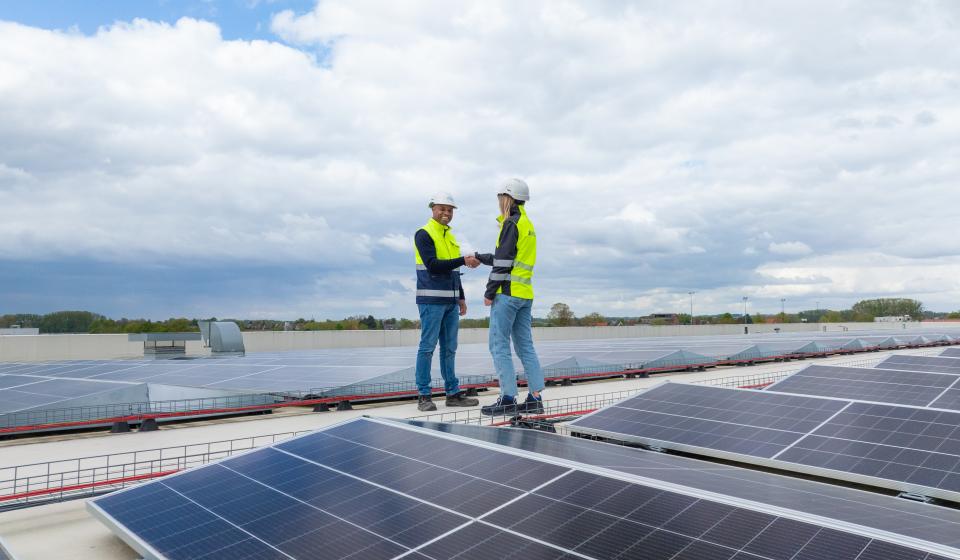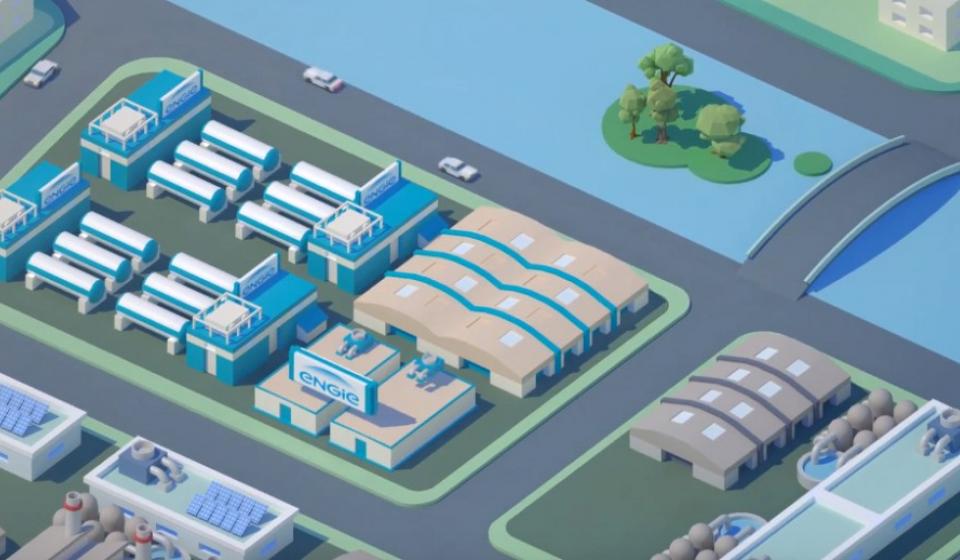Hydrogen: the green trump card in future mobility
Hydrogen is clearly a very important sustainable energy source for the future, having a combustion process which only releases water and so involves no greenhouse-gas emissions. Hydrogen can produce energy and generate electricity. This means it can be used to develop vehicles with absolutely no harmful emissions and the ability to run for substantial periods without refuelling.
The cleanest way of producing hydrogen actually involves electrolysis of water by means of electricity generated by renewable sources. This form of production is one of the future drivers chosen by ENGIE with a view to ramping up the energy transition. “Hydrogen is very much the missing link in a completely decarbonised, decentralised and digitalised system”, indicates ENGIE Group Executive Vice-President Thierry Lepercq. “We want to develop green mobility, whether via CNG, electricity or innovative solutions based on hydrogen.”
Hydrogen vehicles based on electric cars
In conjunction with Michelin, ENGIE recently acquired a stake in fuel-cell pioneer Symbio FCell. As Thierry Lepercq continues, “We are developing hydrogen vehicles based on their electric counterparts by adding a kit that extends the time they can go without refuelling. This range extender is therefore unique, being based on vehicles already manufactured on an industrial scale.”
The acquisition of the stake in Symbio FCell will allow ENGIE to play an active part in developing the uses of hydrogen, as the Symbio FCell solution is synonymous with a technically feasible, economically balanced and financially sustainable line of business. Besides its range extender, the company is working on new high-power drive systems entirely based on hydrogen fuel cells for applications in road, maritime and inland-waterway transport.
Hydrogen Territories
In France, nine ENGIE Group projects have been selected in the context of the Hydrogen Territories initiative, which aims to demonstrate, on the scale of a particular territory, the technical and economic feasibility and environmental benefits of deploying hydrogen in energy networks and for local energy applications.
“Using hydrogen is of strategic importance for ENGIE”, says ENGIE Chief Executive Officer Isabelle Kocher, “because it speeds up the transition to an energy sector with reduced CO2 emissions, whether by centralised or decentralised means. This green gas’s ability to be stored and transported makes it an excellent vector for the development of intermittent renewable energy and a means of facilitating the rollout of green mobility.”
ENGIE is working on three lines of development: industrial applications, hydrogen as an energy vector based on its ability to be stored and transported, and mobility. For each of these segments, the Group is developing solutions and exploring innovative technologies.
In this context, among the projects selected for Hydrogen Territories you will note the development of a positive-energy eco-district featuring, for example, hydrogen service stations, solutions for hydrogen production for industry and also hydrogen-based power-grid support and storage infrastructure.
Articles and press releases

ENGIE and Carmeuse announce end of Columbus project due to economic and regulatory considerations

Our strategy to accelerate the energy transition

Carmeuse, ENGIE and John Cockerill join forces to reduce industrial CO2 emissions in Wallonia
